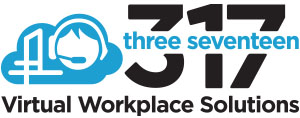Are you a small business who works from home with a remote team? This scenario is mostly a win-win; however, there can be challenges, especially when managing employees.
Below are some best practices that may guide you in the right direction by building an efficient team that loves working for your company. Setting the right expectations in advance helps to ensure a productive environment.
Put a Remote Work Policy in Place
This exercise sets the tone for every employee to follow, whether they are new or a long time team member, and keeps things fair. When everyone knows what is expected of them, performance is better, especially when the rules are clear.
These protocols prevent surprises, uncertainty, and discrepancies in training.
Be a Great Communicator
Communication is incredibly important, especially in a remote model. Don’t be that “boss” who disappears during a project and then returns to point fingers and neglects to acknowledge the positive.
Set up scheduled touchpoints so that you are consistently in-the-loop to avoid missing out on the interaction that drives a team to perform well.
Be mindful of going too far in the other direction by being a micromanager who is disruptive to the team with constant interruptions. So that everyone knows what to expect, schedule regular touchpoints to communicate progress. For example, schedule a daily morning call to jumpstart the day to prioritize tasks and receive updates.
If it makes you feel better, send a follow-up message to reiterate the priorities for the day. But, keep it simple and straightforward.
Great communication will ensure that everyone feels like part of a team working toward a common goal.
Choose a Project Management (PM) Tool
Remote teams function much better when there is a system that allows everyone to share notes, project updates, receive approvals, and more.
A PM tool allows you to keep track of what your virtual team is doing, or not doing, to meet critical deadlines. You can also comment and add any other information needed to keep the train moving forward, without interrupting your team. It must be used daily and consistently by all involved on your team if you want it to work properly and to avoid critical details to slip through the cracks.
Think of your PM system like an assembly line where everyone knows where to go, and a process from the beginning to the final project approval. Many PM systems have tutorials that help navigate best practices. It’s a good idea to have everyone review and ask questions, so they don’t get confused about an important project. Another good option is to get everyone involved when choosing the best tool for your company.
A “Virtual” Pat on the Back Goes a Long Way
The remote model has many benefits, but it too can have some drawbacks, especially if you’re used to office interaction. Many feel isolated and need to feel connected. Work to bridge the virtual gap for a healthier work environment.
A public “thank you” or ” job well done” goes a long way to make someone feel appreciated. Whether you’re working remotely or, in an office, criticism should never happen publicly. You should always request a private conversation and only done constructively.
Get your team involved by allowing them to openly give a team member kudos about something he/she did to help. Giving credit where credit is due, should be a regular part of a thriving work environment.
Don’t Miss That Important Call
The remote model can be challenging when it comes to ensuring your incoming phone calls continue to be answered professionally. You never want your customers or clients to feel things are falling between the cracks simply because the management of your incoming calls is a little sloppy. And, the manner you manage phone calls is the first look into your organization when potential new business calls.
Your team may be a bit overwhelmed with managing projects in separate virtual locations. You can reduce some of the stress by utilizing a third-party resource to act as your full-time receptionist. They will transfer calls to the correct person as needed and take messages when you need to focus on the work at hand.
Fun, Fun, Fun!
It’s possible to have fun, even with a remote team. It’s crucial to help keep the momentum going and retain good people.
Set up a virtual water cooler where everyone can share some non-work related topics like their most binge-watched series, their kid’s antics, or favorite food. This time can be once a week, or whatever works for you as long as work isn’t affected. When your team has it on their schedule, they know when the cut-off is to get back to work.
As a reminder before the “fun” meeting, set some guidelines, so the content is work appropriate and keeps in line with your employee manual.
Remote teams work best when you make a few changes to your leadership style to reflect the virtual environment. These best practices help to reduce employee turnover and increases productivity.

